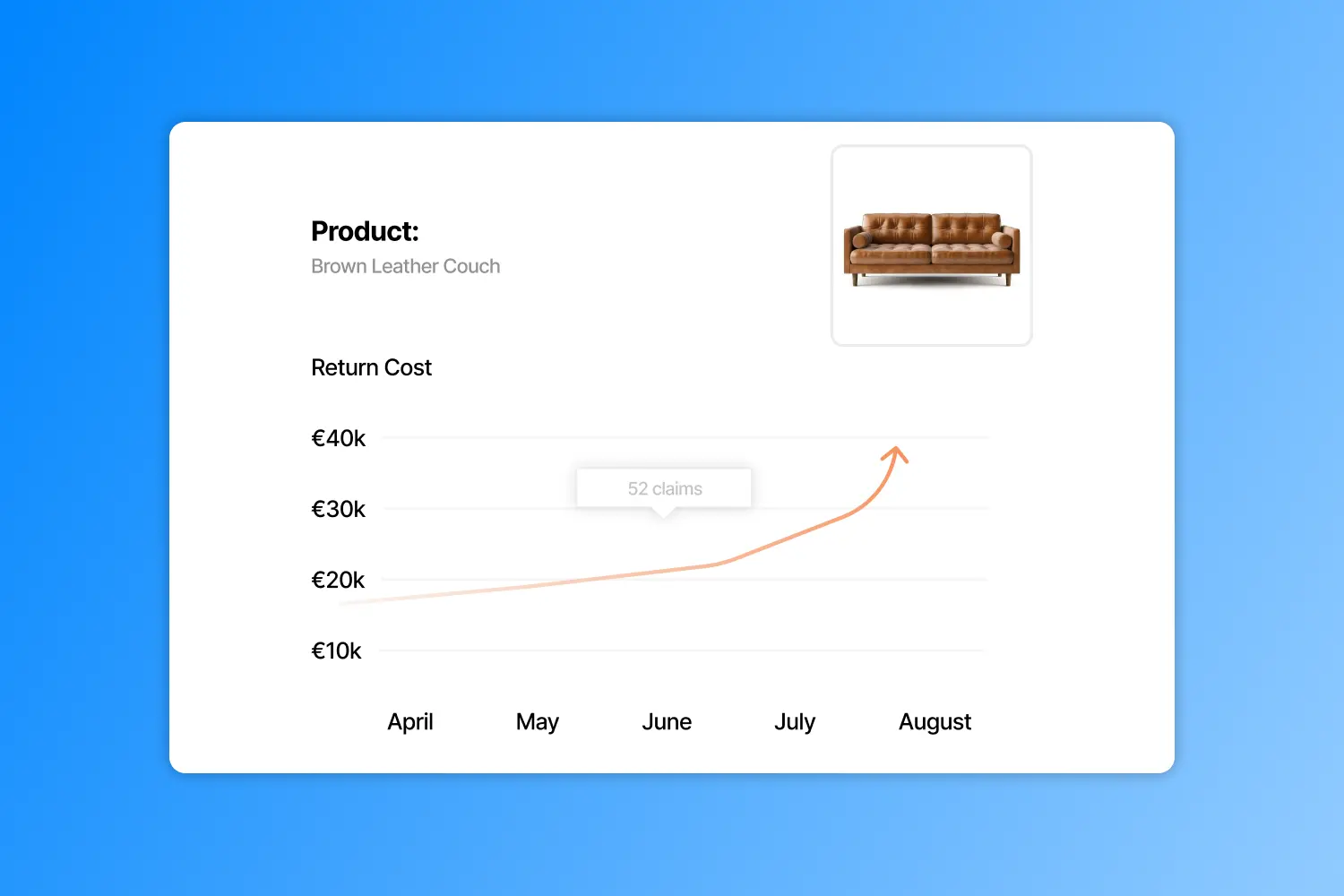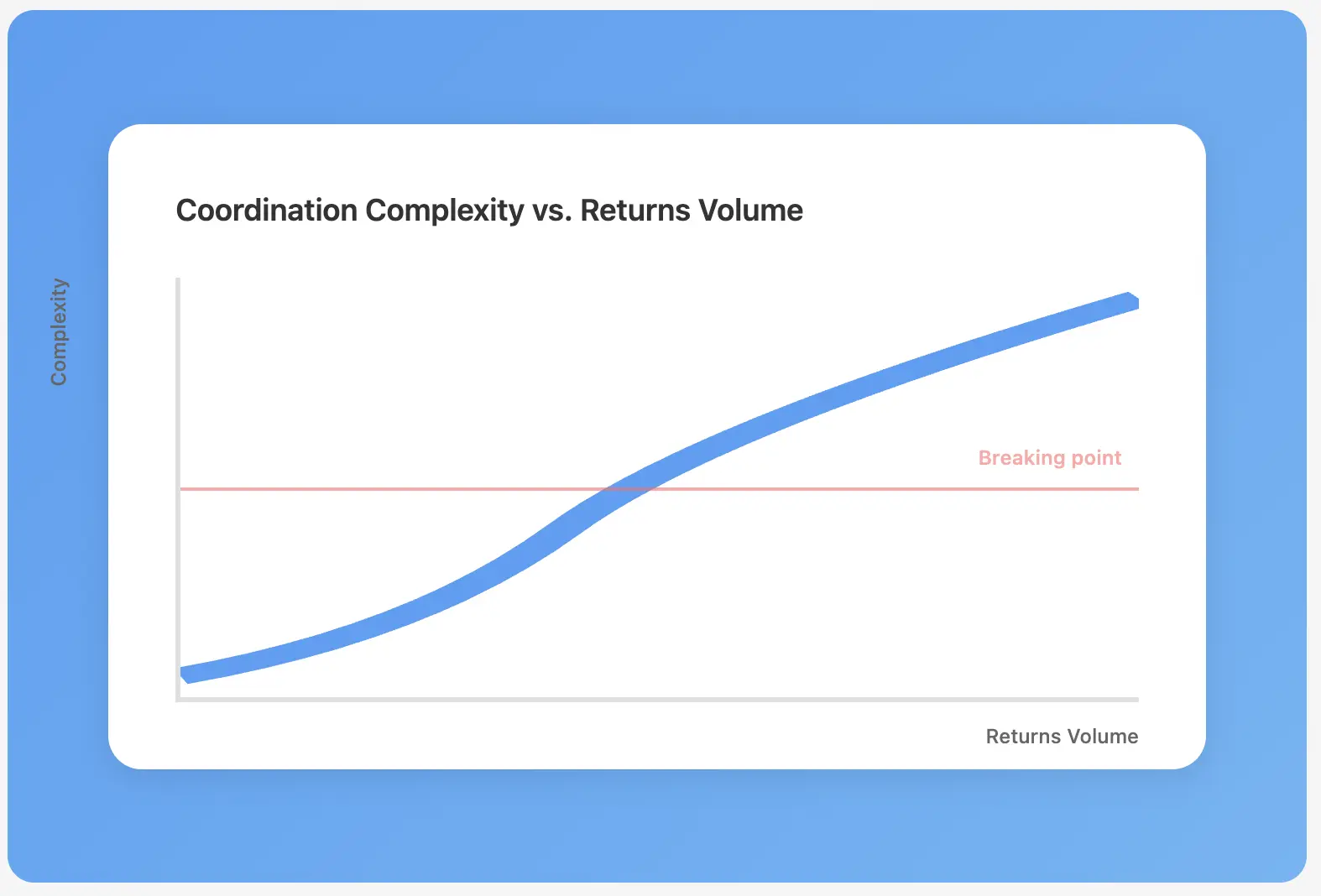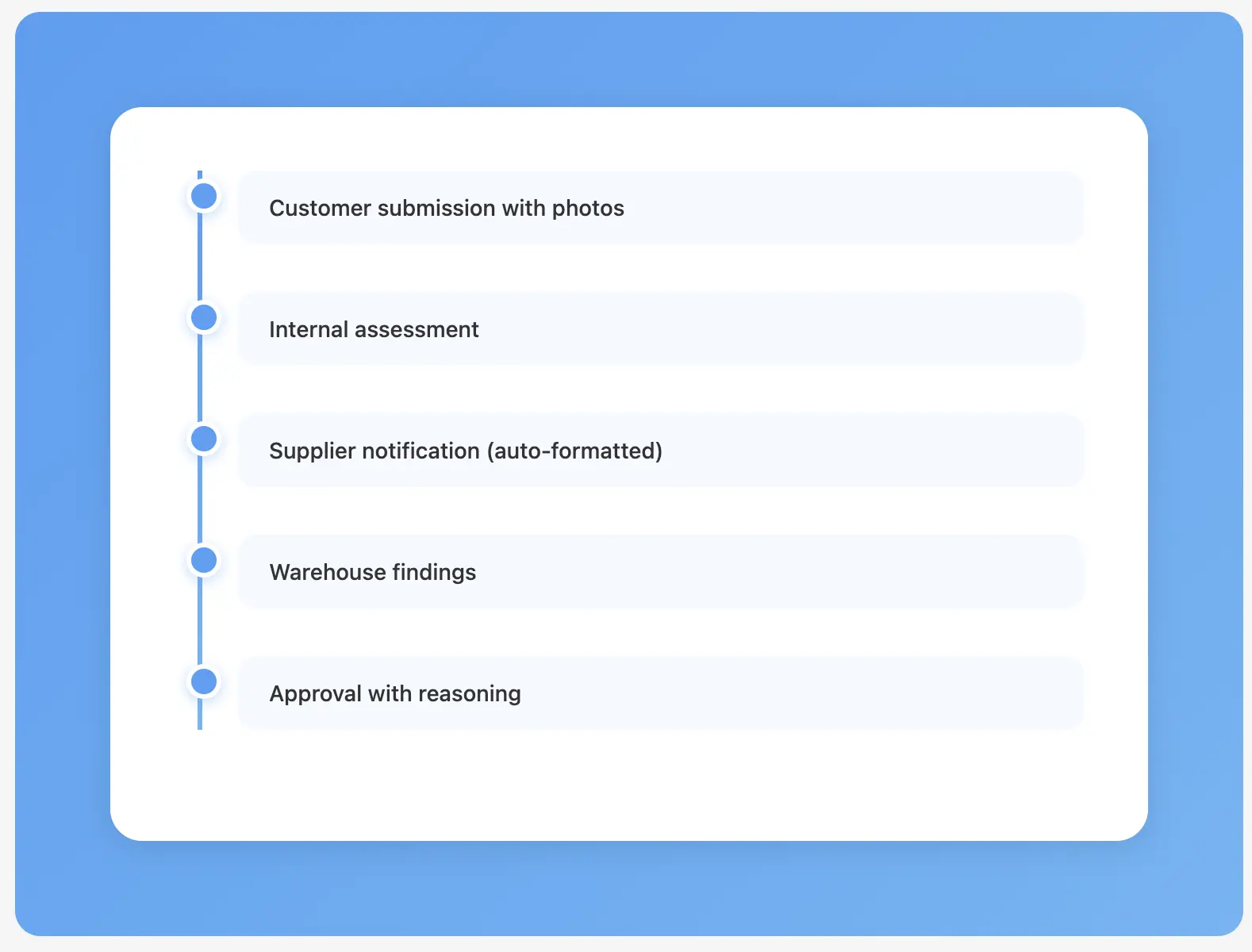
Forwarding claims to suppliers shouldn’t take days of chasing emails and lost attachments. But for most teams, it does, and it’s costing time, trust, and recovery.
The external network that makes returns complex
Fragmented Systems and Policies
When you're dealing with 50+ suppliers, each one has their own rules:
Supplier A: Portal upload, specific naming convention, batch numbers in filename. Wait time: 3-5 days.
Supplier B: Email only, special subject line, files under 2MB. Wait time: 24-48 hours.
Supplier C: Different portal, PDF reports, customer signatures required. Wait time: 7-10 days.
Your team spends more time figuring out how each supplier wants information than actually solving problems.
The Breaking Point
At 50 returns per month with 10 suppliers, email works fine. You can manage it manually.
Somewhere between 200-500 monthly returns, things break:
- Nobody remembers all supplier requirements
- Email threads become impossible to track
- Cases slip through
- Customers complain
- Recovery rates drop
Most companies realize they need help at this point. But they've already built bad habits and frustrated their suppliers.

A concrete example: Swoon’s furniture claims
Before Claimlane, Swoon's case information lived in multiple places:
- Customer communication in Zendesk
- Photos in email attachments
- Supplier discussions in separate email threads
- Warehouse notes in their WMS
- Financial tracking in Excel spreadsheets
Nobody had the complete picture. When a supplier responded to a claim, the CS agent had to hunt through multiple systems to understand the context.
Now everything flows into a single timeline:
- Initial customer submission with evidence
- Internal assessment and classification
- Supplier notification with complete documentation
- Warehouse inspection findings (when applicable)
- Approval or denial with reasoning
- Financial reconciliation
External partners see exactly what they need without email relays. When a supplier logs in to review a claim, they see the customer photos, purchase details, Swoon's initial assessment, and any relevant history, all in one place.
This eliminates the "I need more information" delay loop. It also creates accountability. When a supplier denies a claim, they must reference specific evidence or policy reasons. No more vague "insufficient evidence" rejections.
Real Supplier Accountability
Swoon's old process involved bundling supplier claims at the end of each month, compiling evidence from various sources, and submitting batch reports. This created several problems:
- By the time claims were submitted, context was lost and details were fuzzy
- Suppliers could easily dispute incomplete documentation from cases closed weeks ago
- Suppliers knew they had batch submissions coming monthly, so individual case pressure was low

The new approach submits claims in real-time as they're approved:
Automatic claim packets generate as soon as a case is classified as supplier-responsible. The packet includes customer evidence, assessment notes, relevant order details, and clear defect classification, all formatted according to that supplier's specific requirements.
Rolling submissions happen continuously rather than monthly batches. Suppliers receive 2-3 claims per week instead of 40 claims at month-end.
SLA tracking is visible to both parties. Suppliers see their response deadline. Swoon sees which suppliers consistently miss deadlines or have low approval rates.
Result: Supplier chargeback recovery increased from roughly 60% to over 85%. More importantly, suppliers started taking quality issues seriously because evidence-backed claims arrived consistently and quickly.
Ready to turn your returns network from coordination chaos into structured collaboration? Claimlane's platform centralizes external partner handoffs, automates supplier claims, and generates supply chain intelligence from every case. See how it works →
Learn more about managing complex multi-party returns in our warranty management guide and furniture industry resources.



